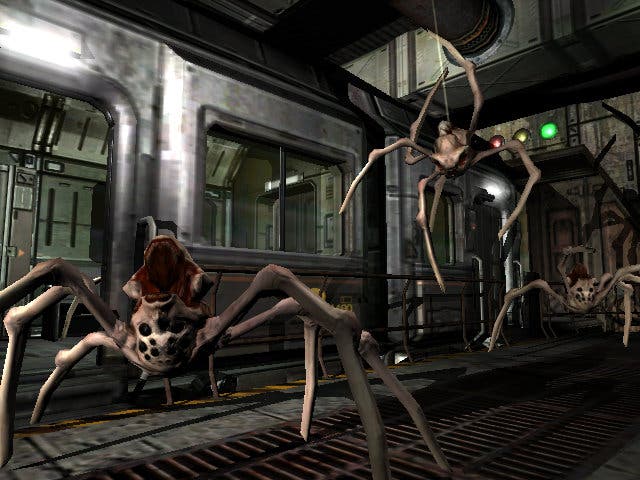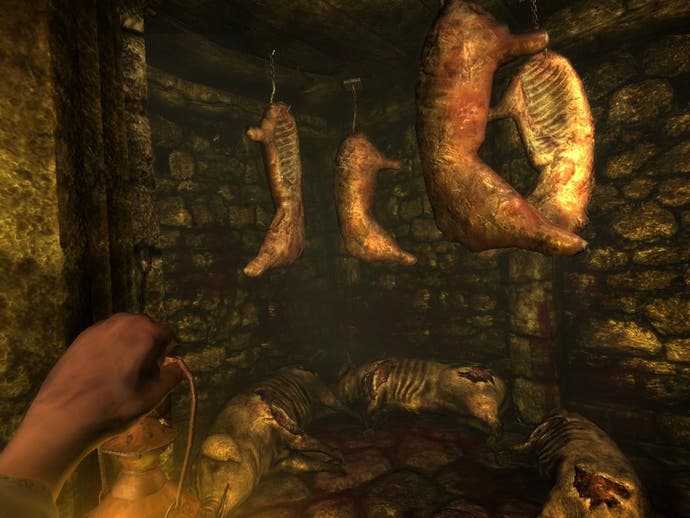Beginner's Guide: Survival Horror
Fear and loathing.
In an ideal world, gamers wouldn't discriminate. We'd have the time and money to play all manner of titles from a wide range of genres, and to pontificate about them at length on internet forums and at dinner parties. All right, LAN parties.
But it's all too easy to stay in your comfort zone. Who hasn't wavered over trying something new - only to pick up yet another futuristic third-person shooter or arcade racer, confident it'll fit like a cosy old pair of slippers?
Perhaps you've always fancied giving a particular genre a go, but aren't sure where to start with such a wide range of so-called classics to choose from. Or perhaps you just want to sound well-informed and hardcore, without actually bothering to play all those games.
Whatever the case, Eurogamer's new Beginner's Guide series is for you. These articles are designed to provide comprehensive overviews of particular genres - where they came from, where they're going and what you should play if you want to sound knowledgeable about them.
Kicking things off is horror expert Tristan Donovan with his guide to all things spooky, gory and liable to make anyone unnerved by things with no face feel a bit sick.
Introduction
Game genres are slippery beasts at the best of times, but few are as tricky as the greased eel that is horror.
The definition of most genres boils down to how they play. You know where you are with a first-person shooter, a platformer or a dancing title. But a horror game? That's a can of festering worms if there ever was one.

A horror setting isn't enough. If it was we'd be putting Castlevania in the same box as Silent Hill, when it's really a platform game dressed up for Halloween. And even though the likes of Silent Hill are obvious fits for the genre, there are always offerings like Doom 3 to confuse matters. Is it a first-person shooter? A sci-fi horror? Or both?
For Thomas Grip, the co-designer of Frictional Games' disturbing Amnesia: The Dark Descent, horror games are defined not by play but by emotion.
"There's nothing to say a strategy game cannot be a horror game – that's not really the issue," he says. "It's not the play style, it's the emotion the game invokes that is the genre."
In effect horror is a meta-genre, an aesthetic capable of absorbing the mechanics of any genre as part of its dastardly plan to turn us all into nervous wrecks.
Since making players uncomfortable is the raison d'être of horror games, they aren't always fun to play.
"I hate the word fun," says Grip. "I'm all for non-fun gameplay. I hate it when people say games must be fun. I prefer to say they need to be engaging."

Climax Studios' Sam Barlow, the designer of Silent Hill: Shattered Memories, agrees that horror games don't have to be slaves to entertainment. "What's cool about horror games is that they are not out to reward players, and that's why some of the more arty games fall into the horror category," he says.
"By definition they are out to make players uncomfortable. When you make most other types of game you reach a point where you ask if it's fun. But horror doesn't have to be fun."
As such, horror games often seek to disempower rather than empower players in order to make them feel vulnerable and uneasy - be that through using fixed camera angles that hide lurking horrors or a worrying lack of ammunition.
A Brief History
So how did this anti-fun, arty, meta-genre come to be? The first experiments in horror gaming emerged in the eighties. They took the form of isolated one-offs which tapped into the potential of games to terrify before fading into obscurity.
Some point to Atari's 1982 VCS game Haunted House as the starting point but this claim is tenuous at best. The player might be defenceless against the monsters within the house, but if vulnerability alone was enough, we should be hailing Pac-Man as the original horror game.
A far more credible starting point is Five Ways Software's 1985 adaption of James Herbert's horror novel The Rats, where London is terrorised by man-eating rodents. Promoted as 'software terror', The Rats featured text adventure sequences that put players into the shoes of hapless Londoners about to encounter the killer rodents.

